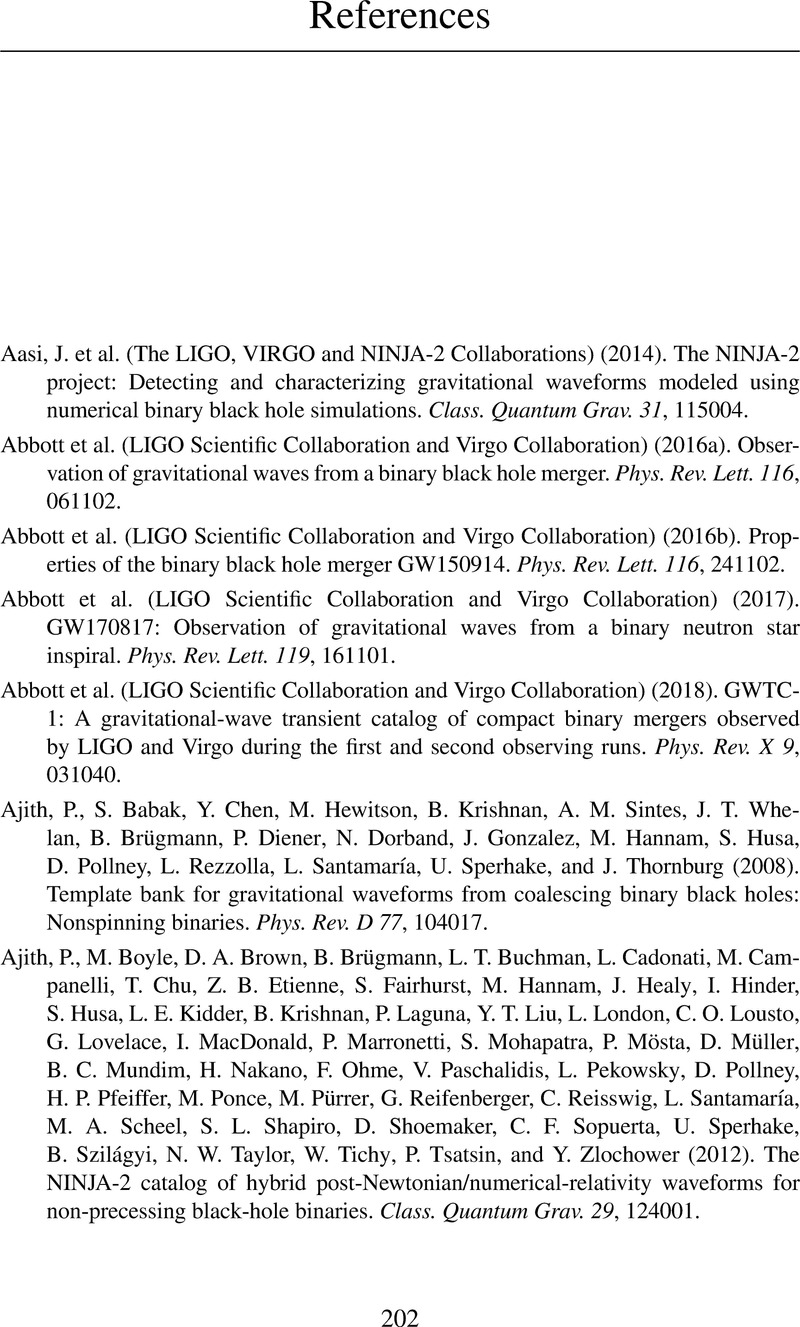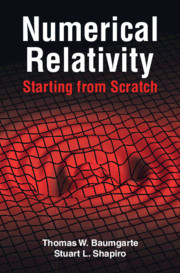Book contents
- Frontmatter
- Contents
- Preface
- 1 Newton’s and Einstein’s Gravity
- 2 Foliations of Spacetime: Constraint and Evolution Equations
- 3 Solving the Constraint Equations
- 4 Solving the Evolution Equations
- 5 Numerical Simulations of Black-Hole Binaries
- Epilogue
- Appendix A A Brief Review of Tensor Properties
- Appendix B A Brief Introduction to Some Numerical Techniques
- Appendix C A Very Brief Introduction to Matter Sources
- Appendix D A Summary of Important Results
- Appendix E Answers to Selected Problems
- References
- Index
- References
References
Published online by Cambridge University Press: 12 February 2021
- Frontmatter
- Contents
- Preface
- 1 Newton’s and Einstein’s Gravity
- 2 Foliations of Spacetime: Constraint and Evolution Equations
- 3 Solving the Constraint Equations
- 4 Solving the Evolution Equations
- 5 Numerical Simulations of Black-Hole Binaries
- Epilogue
- Appendix A A Brief Review of Tensor Properties
- Appendix B A Brief Introduction to Some Numerical Techniques
- Appendix C A Very Brief Introduction to Matter Sources
- Appendix D A Summary of Important Results
- Appendix E Answers to Selected Problems
- References
- Index
- References
Summary

- Type
- Chapter
- Information
- Numerical Relativity: Starting from Scratch , pp. 202 - 211Publisher: Cambridge University PressPrint publication year: 2021



